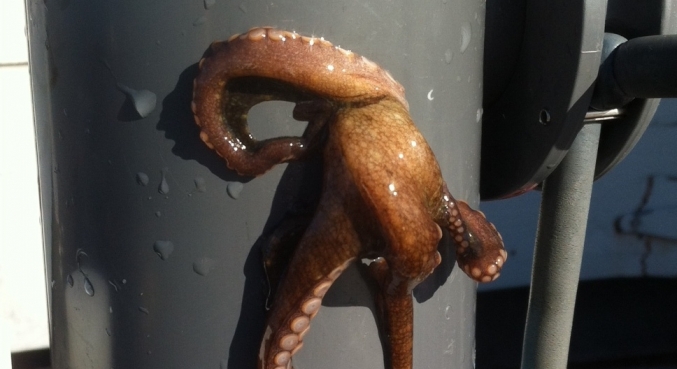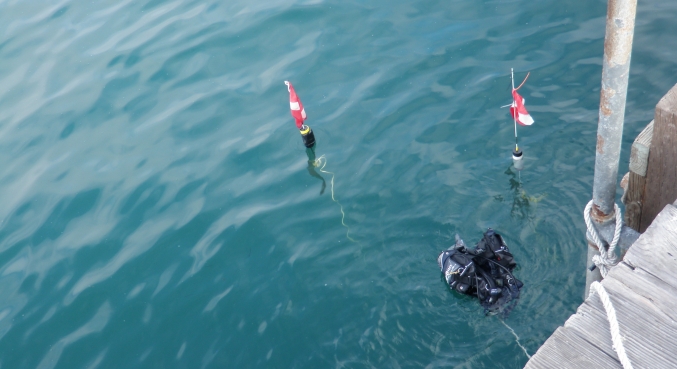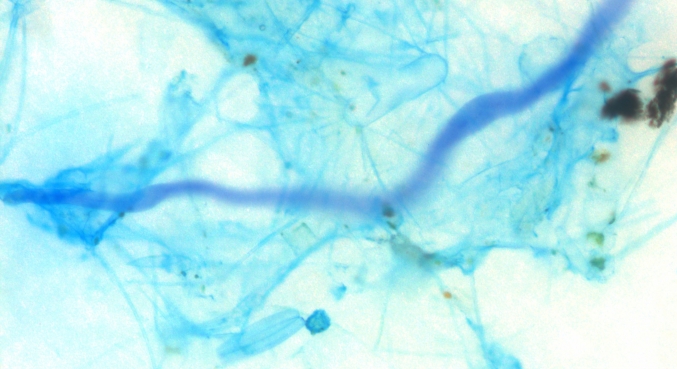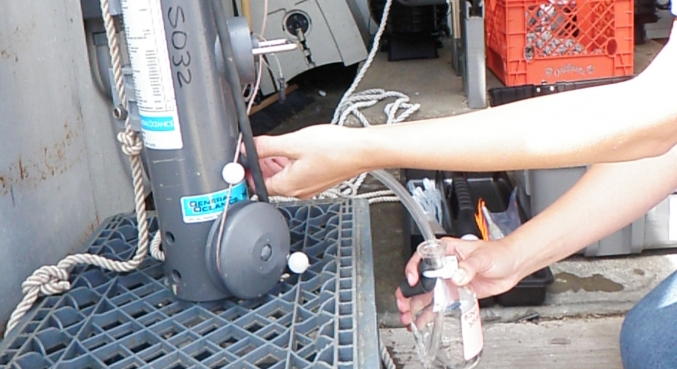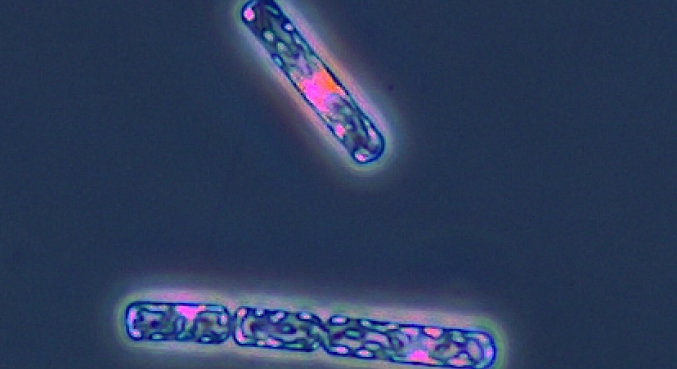Ocean acidification is the term used to describe the change in the ocean induced by increasing input of CO2 from the atmosphere. The increasing concentration of inorganic carbon leads to a decrease in the pH, both of which impact many biological processes. To learn more about ocean acidification go to Ocean Acidification Research on Carbon Cycling.
All our ocean acidification work is funded by the National Science Foundation!
Our research focuses on ocean acidification (OA) and its consequences for carbon cycling. We look at the variability of pH in the Santa Barbara Channel. We deploy a sensor that measures pH in the water and take samples weekly to compare the sensor data to chemical measurements. Sometimes marine organisms try to hide in our sampling gear, such as the octopus hiding in the water sampler in the photo. Once we understand the natural variability of the carbonate system we try to understand how marine organisms respond to this variability. Are kelp forests especially impacted? We work on this in collaboration with the Californian Water Board and the Santa Barbara Coastal LTER
Experimentally we investigate how OA changes the functioning and efficiency of the biological pump. Elevated concentrations of hydrogen ions may decrease the stickiness of organic matter reducing its capacity for aggregate formation. Additionally ocean acidification may change the production and formation of transparent exopolymer particles, called TEP, which are essential for aggregate formation. We conduct experiments to investigate the formation of TEP and marine snow under different OA scenarios, using rolling tanks that simulate continuous sinking of aggregates through the water column. See a movie on our laboratory work.
The overall goal of another ocean acidification project is to determine if carbon overconsumption occurs under high CO2 conditions, how it impacts the partitioning of organic matter between dissolved and particulate pools and whether it could have a positive or negative affect on the biological carbon pump. Together with our collaborators we experimentally investigate whether future CO2 conditions will alter the production and fate of organic carbon released by phytoplankton. Increased availability of inorganic carbon without a concomitant increase in nitrogen is expected to increase carbon overconsumption by phytoplankton, greatly enhancing dissolved carbon exudation under high CO2 conditions. The dissolved organic matter (DOM) released under high CO2 regimes is hypothesized to have a higher carbon to nitrogen ratio compared to current DOM. Will this alter the availability of DOM to marine microbes? Depending on its bioavailability, this additional DOM is respired or accumulates in surface waters. Accumulation of recalcitrant DOM at the surface might lead to increased flux of carbon carried to depth when surface waters are subducted by physical processes. Alternatively, greater exudation under high CO2 may also facilitate the export of particulate organic matter (POM) through the formation of transparent exopolymer particles (TEP) which are major agents of particle aggregation and their export. These processes impact the ability of the ocean to take up additional carbon.

